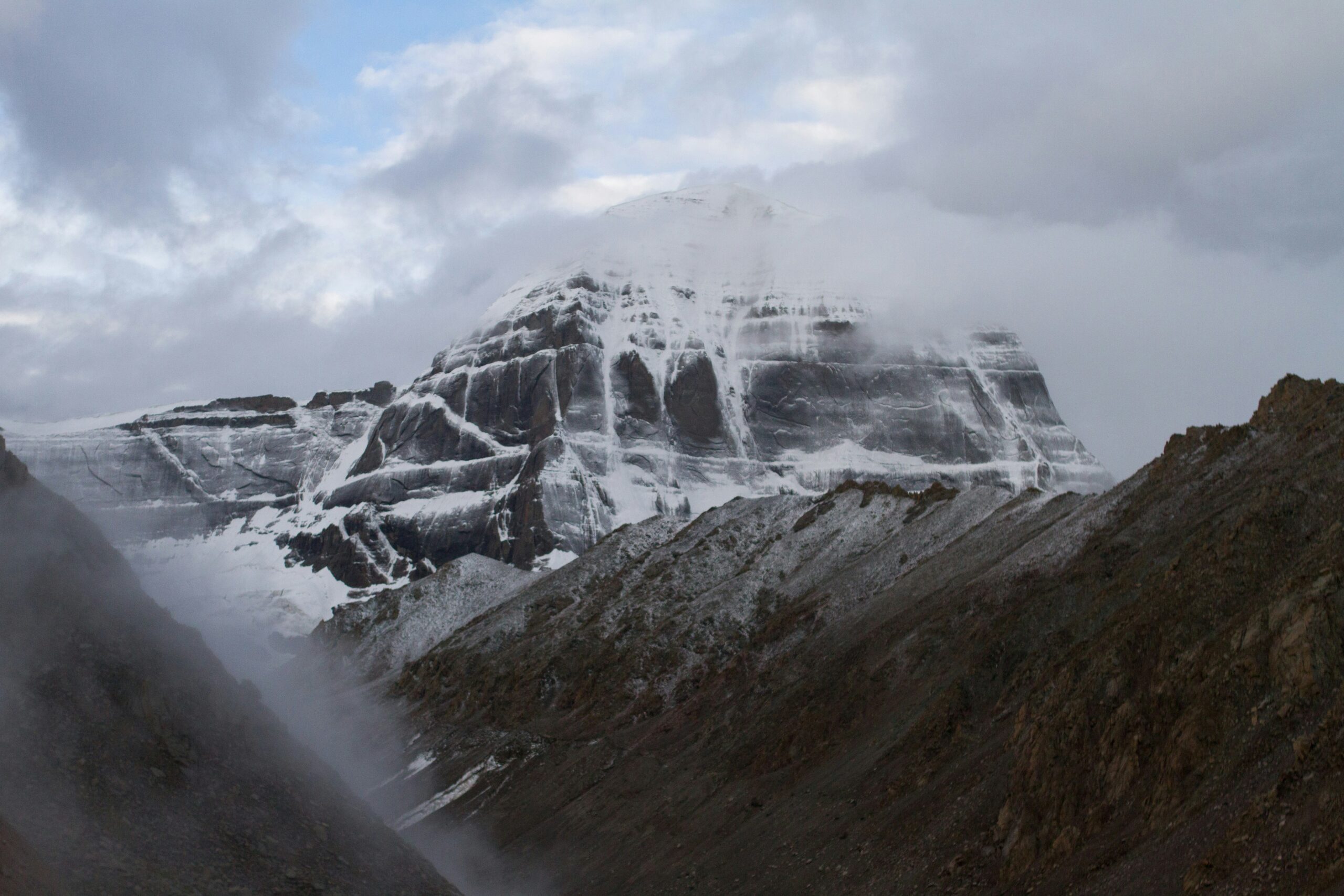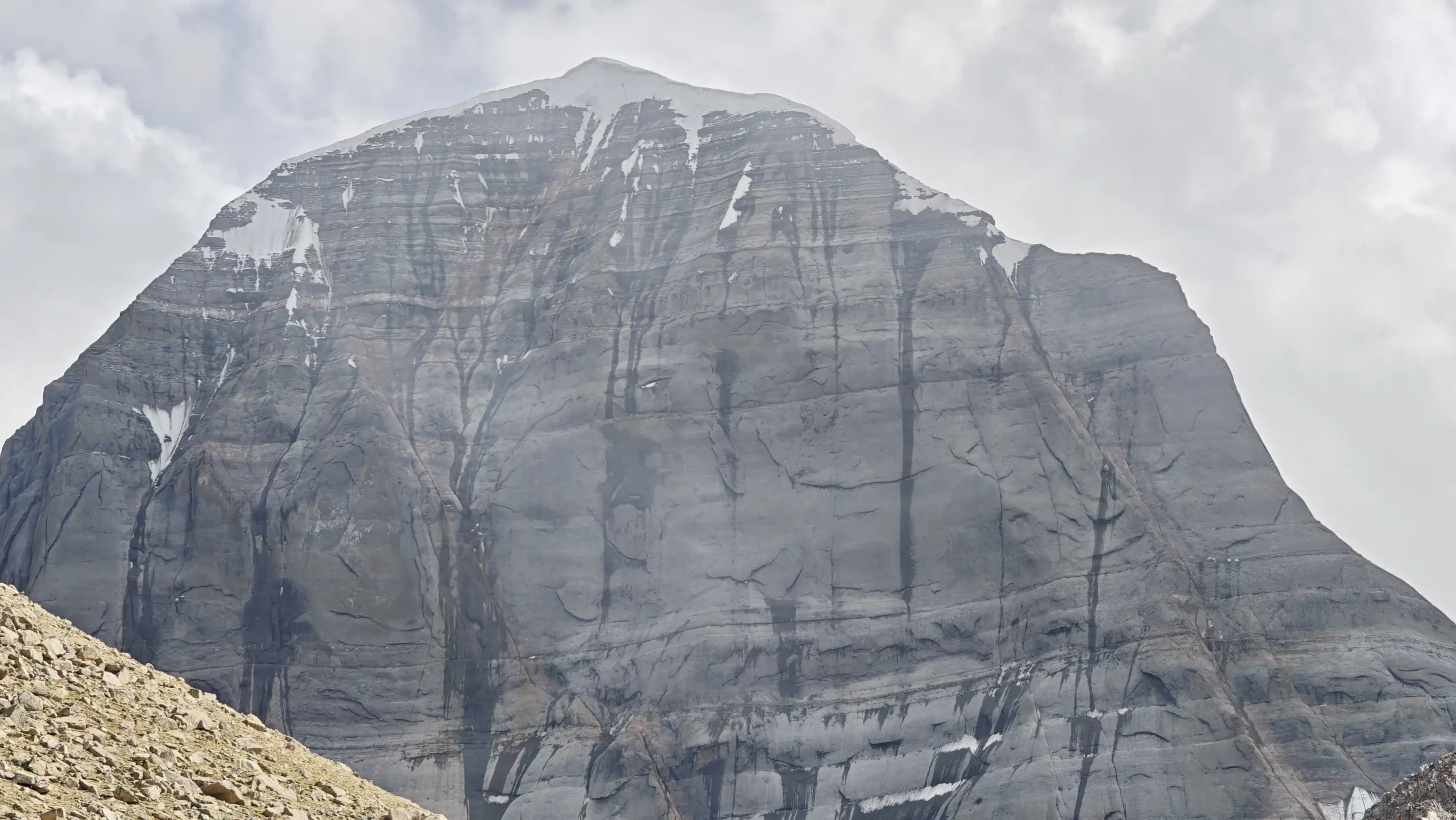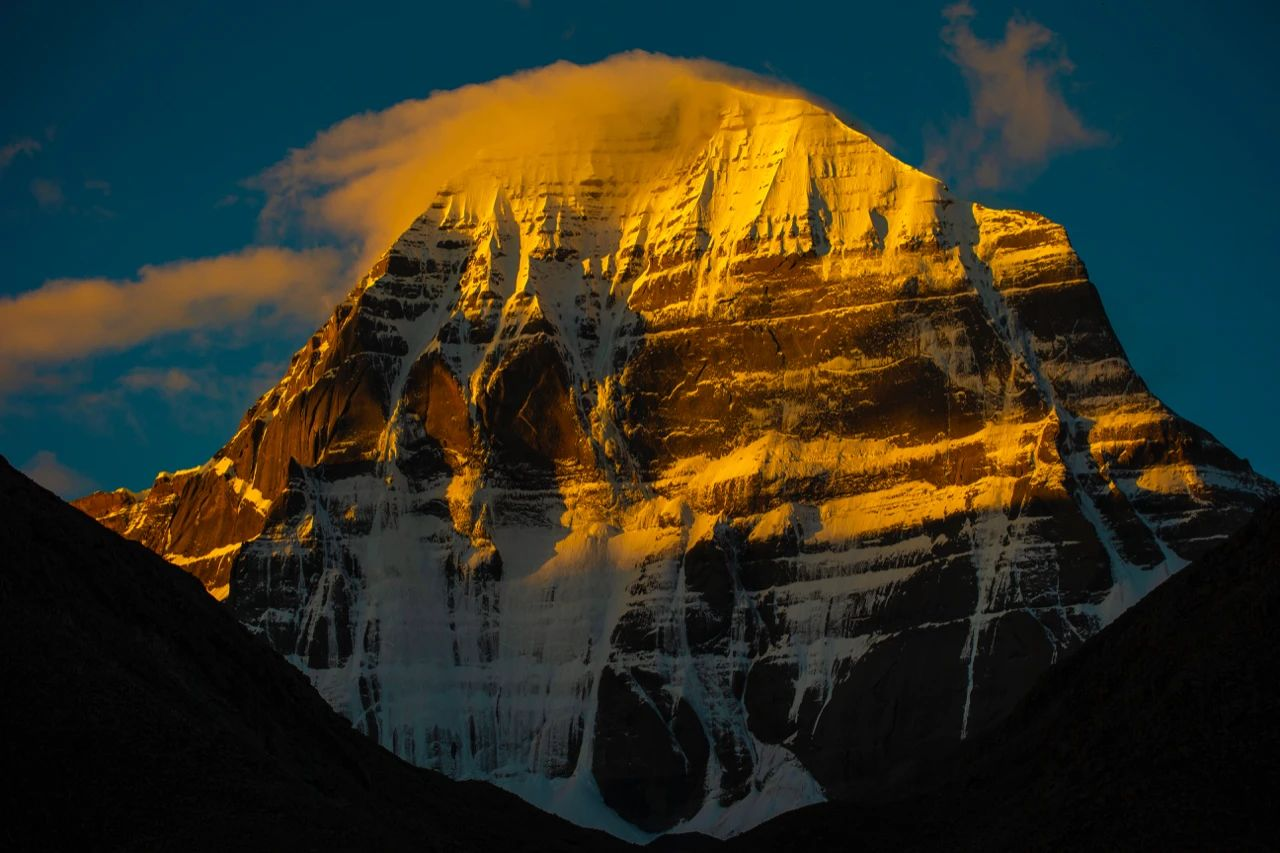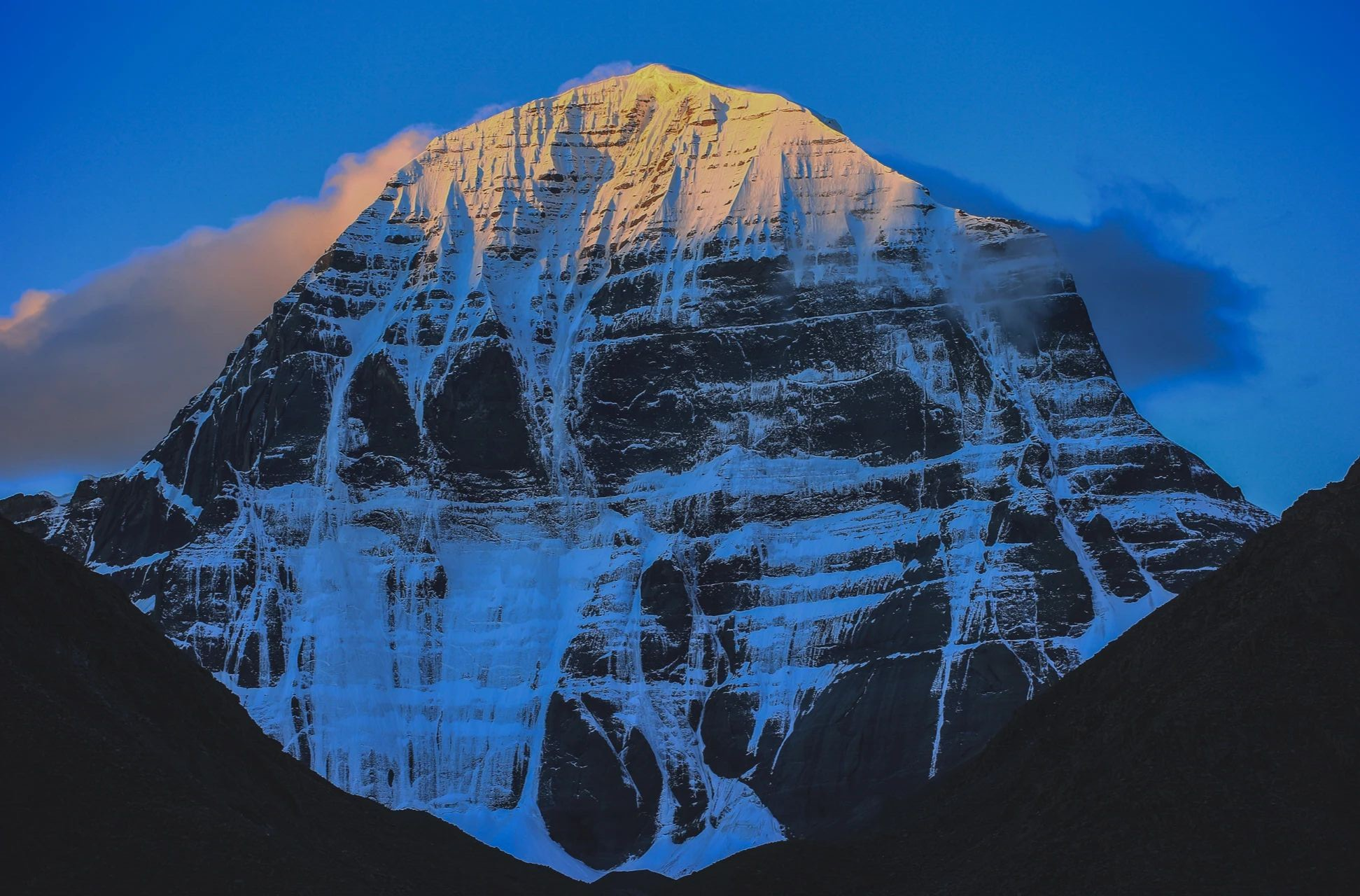16 Days
Moderate

Mount Kailash appears like an otherworldly mountain due to its remarkable beauty and extreme remoteness near the sacred ground. Mount Kailash Tour/Yatra establishes its magnificent attraction from its location in the Tibet Autonomous Region.
Towering on the Himalayas, this peak represents a sacred place which many diverse groups of believers hold deeply sacred. The untouched natural beauty, along with its religious and ancestral importance, led Mount Kailash to become a symbolic destination for devotion and mystical fascination.
Charan Sparsh emerged from religious practices that trace their roots back to Hindu and Buddhist traditions. The term “Charan Sparsh” stands for foot-touching in its literal sense to create an act that shows reverence while emphasizing humility through deep respect.
People respect Mount Kailash, although actual physical contact is forbidden through the symbolic tradition of Charan Sparsh. Through this blog, we explore the sacred bond connecting people to Mount Kailash as well as the whole experience of participating in the Kailash Charan Sparsh Yatra.
Mt Kailash is not just a beautiful destination for travellers. This holy mount exists as a highly important place with several interweaving religious and cultural components throughout various traditions:

Hindus see Mount Kailash as the sacred dwelling place of their divine deities, Lord Shiva and Goddess Parvati. The spiritual site Kailasa Parvat stands as the point that religion says contains the centre of everything. According to Hindu beliefs, Lord Shiva stands as a principal deity who chooses to meditate high upon this holy mountain. Devotees connect with heavenly spiritual power according to Hindu beliefs because Mount Kailash emits an endless and strong cosmic energy.
Demchok (or Chakrasamvara) represents Mount Kailash as a divine symbol for Tibetan Buddhists. The symmetrical form of Mount Kailash inspires Buddhists to recognize it as an image of a mandala which stands as a spiritual symbol of the universe. Pilgrims give supreme devotion to sacred Kora by walking around the mountain which they believe transforms their lives spiritually.
Jains recognize Mount Kailash through its name “Ashtapada” because it marks the site where Rishabhadev, the first Tirthankara, achieved liberation. This site serves as more than just a physical address to followers since it leads them toward moksha (salvation).
The Bon religion, Tibet’s ancient spiritual tradition, holds Mount Kailash as a holy site connected to its founder, Tsentse. They believe this mountain encapsulates the essence of their cosmic teachings. Thousands of pilgrims from different religions visit this divine holy place to seek personal growth and inner transformation, and to seek divine blessings.

16 Days
Moderate
Hindu and Buddhist followers have practised “Charan Sparsh”, which means spiritual foot-touching, since ancient times. Through this action, devotees show honour and humbleness because they want to demonstrate their devotion to the sacred and their admiration for wiser, spirit-filled individuals. By engaging in “Charan Sparsh”, a person aims to receive divine blessings and establish spiritual connections to higher energies.
The prohibition against touching Mount Kailash for religious reasons does not prevent followers from expressing their devotion through completing the Kailash Kora circumambulation. Walking around the mountain poses difficulties from high altitude conditions alongside tough paths, yet this experience equates to standing in divine closeness.
Being near Kailash generates a transformative effect on people both emotionally and spiritually. Religious pilgrims go beyond physical boundaries when they visit the site because they seldom report achieving inner peace and spiritual understanding along with an intense divine connection.

Although the Kailash Charan Sparsh route is an important part of the Kailash Inner Kora, it is not the same as the Inner Kora. To perform the Kailash Charan Sparsh in Tibet,, you can reach different ways like taking a direct flight to Lhasa, through the Rasuwagadhi border or by taking a luxury helicopter through Simikot Hilsa.
Visitors use Nepal as a leisure port for the Kailash Charan Sparsh because it shares the border with Tibet. Also, Nepal is the best way to reach Tibet. The air distance between Kathmandu and Lhasa is about 609 kilometres, and about 1,300 kilometres by road.
| Day | Activity |
| Day 1 | Arrive at Kathmandu International Airport and Transfer to the Hotel |
| Day 2 | Kathmandu Sightseeing and Tibet Visa Process |
| Day 3 | Preparation Day and wait for the Visa |
| Day 4 | Preparation Day and wait for the Visa |
| Day 5 | Drive to Syabrubesi or Timure |
| Day 6 | Drive to Rasuwagadhi Border, cross the Border, and drive to Kerung Town in Tibet |
| Day 7 | Drive from Kyirong – Milerappa Cave (2 Hours Hiking) – Dzongba (4,450m) – Saga |
| Day 8 | Drive from Saga – Manasarovar Lake (4,590m) – Manasarovar Circumambulation (Half) by Conservation Vehicle |
| Day 9 | Visit Manasarovar Lake, Chiu Gompa, and drive to Darchen (4,575m) |
| Day 10 | Drive to Yamadwar and Kailash Kora Starts: Trek to Diraphuk |
| Day 11 | Trek to Mount Kailash Charan Sparsh, and visit Dera Monastery, for prayer and meditation |
| Day 12 | Mt. Kailash Kora continues: Trek to Zuthulphuk Via Dolma La Pass (5600m) |
| Day 13 | Last Day of Kailash Kora: Trek to Mani Wall (4,800m) and to near Darchen (11 km), and drive to Saga |
| Day 14 | Drive from Saga (4,640m) – Pelku Lake (4,592m) – Kyirong (2,700m) – Local Shopping |
| Day 15 | Drive from Kyirong – Rasuwagadhi (1,815m) – Kathmandu (1,400m) |
| Day 16 | Final Departure |
Note: You can even customize the itinerary as per your needs and interests. Additionally, if you would like to add a visit to the Everest base camp from Tibet, it is also possible.

The pilgrimage to Kailash Charan Sparsh Yatra presents formidable obstacles to all participants. High-altitude regions combined with unpredictable weather and rough terrains present obstacles even to experienced trekkers. Travelling from 4,500 to 6,000 meters poses risks of developing altitude sickness due to the elevation.
The entire journey includes challenging ascents and high altitude mountain pass, Dolma La Pass, which is located at an altitude of 5,630 meters (18,470 feet). The long-hour drive in Tibet and daily extended trek for around 5-6 hours is not a cakewalk. So, this Kailash Charan Sparsh demands a good level of physical and mental resilience from the pilgrims.
Those who maintain their efforts find both spiritual connection and unmatched accomplishment through their journey. The pilgrimage pushes travellers to their physical boundaries as well as their mental and emotional capacities.
Even though it is challenging, those who properly prepare and properly acclimate themselves face lower challenges on their trek.
Let’s see the factors that add the difficulty for the Kailash Charan Sparsh.
The trek takes place at elevations ranging from 4,500 to 6,000 meters. One of the most challenging parts of the Kailash Charan Sparsh is to cross the Dolma La Pass. This mountain pass is situated at high altitudes, and when walking at high altitudes, it can cause altitude sickness, making it challenging for many pilgrims.
The road until Darchen is smooth and paved, but after that, you will ride off-road. Also, during the trek, you will walk in uneven, rocky, and steep sections, especially when crossing the challenging Dolma La Pass.
Tibet is dry and windy most of the time. Even though during the daytime the temperature is moderate, it will be cold and chilly at night. So trekkers need to prepare for the varied temperatures and sudden changes in weather, including freezing temperatures.
The Kailash Kora is 52 km long in distance, and it takes multiple days to complete. Walking for multiple days in extremely high altitudes for long hours can be physically exhausting.
Cities area of Tibet have good facilities for food and accommodation, but in the remote areas near the Kailash Parbat or Kailash Mountain, there will be limited facilities. You need to learn to live in basic facilities and don’t expect luxury in remote areas.
Preparing early and appropriately helps to make the Kailash Charan Sparsh Yatra successful and complete in conventional ways. Here are some of the important tips that you can follow before undertaking the Yatra to Kailash Mansarovar:
Preparing physically for the Kailash Charan Sparsh Yatra is an important part of preparation to have a wonderful time during the trip. Here are some exercises that you can try before undertaking the Yatra for around 2-3 months in advance.
Acclimatization is an important step to prevent altitude sickness and high altitude effects. You can stop for a few days in a high-altitude region before beginning your kora trekking to adapt your body to altitude. Here are some of the tips to make your acclimatization plan properly.
A full medical checkup is recommended if you have pre-existing health conditions and if you are trekking for the first time. So you can know how fit you are for trekking in the high altitude of the Tibet region near the Kailash Mountain. Your doctor can recommend the prescribed medicine and let you know if you can undertake this trek or not, see your health conditions.
Trekkers should not underestimate the power of metal strength while heading for the Kailash Charan Sparsh. Having mental strength helps trekkers to handle the trek’s challenge patiently. It helps build confidence when trekkers are encouraged with positive thoughts and strong determination.
Trekkers can hike with peace of mind if they have an evacuation plan and emergency medical services in place during the Kailash Charan Sparsh. In addition to offering financial security in the event of unforeseen circumstances, emergency medical plans’ prompt services may even save lives.
Tibet region provides you with full facilities of food and accommodation during the Kailash Charan Sparsh. However, you need to stay in a simple yet comfortable lodge or guest house. In Urban areas, you can find a wide range of accommodations. But in remote areas, there is no option other than a simple guest house with minimal amenities. So don’t expect luxury during the Charan Sparsh because this Yatra is all about immersing yourself in simplicity and spirituality.
Your tour operator will arrange three meals because in Tibet, during Charan Sparsh, you will find only the Tibetan Dish. Mostly veg items will be provided during the trip, and we advise you to carry packed snack and water purification since the resources are limited here.
| Meals | Items |
| Breakfast | Soups, Popcorn, Biscuits, Pakoda, Bread, Jam/Honey, Cornflakes, Muesli, Puri-Sabji, Rice Pudding, Poha, etc. |
| Lunch & Dinner | Rice, Pulao, Roti, Sabji, Dal, Rajma, Pickle, Salad, Papad, Salad, Papad Fruits, etc. |
| Beverage | Variety of Tea/Coffee |
Note: During the Kailash Charan Sparsh, you will eat the food prepared by the Nepali cook, which the tour operator arranges. The lunch items will be packed which are prepared in the morning. Expect what is given in the menu. If you want to try a Tibetan dish, you need to pay on your own, including beverage items like soft drinks and energy drinks.
Knowing the best time for the Kailash Charan Sparsh Yatra helps to make your journey safe and enjoyable. So we suggest you travel during a favorable time for travelling and for trekking if you are planning to undertake Kailash Charan Sparsh.
The favorable time, commonly known as the best time for the Yatra, is between May to September. During this month, the weather is favorable for travelling, including trekking. The route will be accessible, and temperatures will remain between 10°C and -10°C.
Tibet during the winter months(October to April) remains harsh due to heavy snowfall and freezing temperatures. Therefore, travellers avoid travelling during this season if they are travelling to Tibet.
Read more: Best Time to Visit Tibet with Temperature and Climate Guide
Packing smartly is critical for a successful Yatra. Here’s a checklist:
Carrying the right gear ensures you’re prepared for all conditions during this demanding trek.
Since Mount Kailash lies in Tibet, travelers who are planning to do Kailash Charan Sparsh need the following:
Note: This permit will be arranged by the tour operator who is organizing the trip to Tibet. You need to provide a valid document to obtain the Chinese group visa,ecially the Tibet permit,, along with other permits.
Remember that you cannot get a permit for solo travellers and you will get the permit or visa Visa Only with the help of a registered tour operator. Additionally, it takes some days to get the permit, so make sure to process the permit early to obtain it in your time frame.
The cost of the Kailash Charan Sparsh Yatra can vary depending on several factors such as the travel agency, the duration of the tour, the level of service, and the group size.
Here’s a general breakdown of factors that influence the cost of Charan Sparsh:
Most of the travel agencies that sell packages for travellers offer all-inclusive packages that cover permits, transportation, accommodation, meals, and guides.
The cost will range between $2,500 to $5,000 per person for a standard 12–16 day itinerary.
The cost of obtaining a Chinese visa, Tibet Travel Permit, and other necessary permits is usually included in the package, but can add up to $200–$300 if arranged separately.
Flights to Kathmandu (Nepal) or Lhasa (Tibet) are not included in most packages. These can cost $500–$1,500, depending on your location and availability.
Overland transportation to the Kailash region is included in the package but adds to the overall cost.
Basic guesthouses and tented camps are provided during the Charan Sparsh trek. While these are not luxurious, they are included in the package cost.
Three times, Vegetarian meals will be included in the package. However, you may want to budget for snacks or additional food items, which can cost $50–$100 USD.
Travel Insurance: High-altitude trekking insurance is essential and can cost $50–$150 USD.
Personal Expenses: Souvenirs, tips for guides, and other personal expenses can add another $100–$200 USD.
Equipment: If you need to purchase or rent trekking gear, this could cost $100–$300 USD.
Some agencies offer premium packages with better accommodations, private transportation, and additional services, which can increase the cost to $3,000–$6,000 USD.
Note: For a standard Kailash Charan Sparsh Yatra, you can expect to spend around $2,500–$5,000 USD per person, excluding international flights and personal expenses. It’s always a good idea to compare packages from different agencies and ensure they include all necessary permits and services.
Yes, you can use the facilities of hiring a horse and a personal porter during the Yatra to Kailash Charan Sparsh. These facilities can be used from the location of Darchen for those who wish to avoid a strenuous walk. Even though you use these facilities, you still need to walk in some areas. Additionally, while you hire a horse or a personal porter for Kailash Charan Sparsh, you need to pay on your own. The cost of hiring will not be included in the tour package of Kailash Yatra.
Namaste Nepal Trekking stands out for its expertise and experience in organizing Kailash Yatras. Let’s see the reason to Choose Namaste Nepal Trekking for the Charan Sparsh tour in Tibet.
Choosing the best travel partner not only makes your spiritual journey wonderful and hassle-free but also helps to make your trip memorable.
Everyone wishes to visit this holy place once in a lifetime, but due to certain reasons, a physical Yatra is not possible for everybody. So, if you are among those who are unable to visit Tibet for Kailash Charan Sparsh, then here are some ways to spiritually connect with Kailash:
You can connect with Kailash’s energy no matter where you are since its essence surpasses its actual location.
As you may have heard about the story about the Milarepa and Cave, the greatest Tantric or Yogi who only climbed the Kailash. There is no record of any normal human being that has climbed to Mt. Kailash. And we know that the Chinese government has banned climbing this holy mountain for a long time, so even if anybody wants to try it in this modern age, it will not be possible due to restrictions.
Here are several reasons to ban climbing Kailash:
Note: Kailash’s attraction has been strengthened by the mythical tales of climbers who tried to reach the summit but encountered mysterious or terrible results.
Mount Kailash stands today as a powerful spiritual landmark alongside numerous other holy sites across the planet. Kailash represents more than a geographical point because the journey relates to a profound spiritual encounter, which teaches us about faith alongside humility and surrender in devotion.
Touching the foot of the Adi Kailash or Kailash mountain is not feasible in reality; however, pilgrims can experience a deep connection with Kailash’s divine power by completing their symbolic rotation around the mountain.
If you are planning to visit Tibet for Kailash Yatra or Charan Sparsh, then make sure to choose the best time to visit. Prepare well in advance to have a comfortable and memorable journey, and when you visit this holy site, respect the sacredness and its legacy.